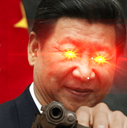Non-archive: https://www.nytimes.com/2025/04/21/world/asia/china-tariffs-trade-warning.html
This is actually some interesting strategy from the US. Rather than trying to actually reindustrialise the USA itself, they could move their offshore labour to some other aspiring third world country. The carrot of becoming a “Second China” against the stick of suffering sanctions could be enough to convince some massive country like the Philippines to also embargo China.
They can also extract more surplus than corporations in China due to less labour regulation and class struggle.
Vietnam seems like a prime candidate to become to China what China was to the USSR in the 70s. Despite statements of solidarity and friendship, they can easily fill China’s niche in the world market.
Ironically, this competition between the old economic bloc and the nascent Chinese one could lead to industrialisation efforts in the periphery of both.
I’m not as positive on China as most users here, so I see a clear incentive for Chinese capital to invest in dependent primary sector development at the periphery of their bloc, as investing in advanced manufacturing is both competition in their own bloc and creating a replacement for the NATO bloc. On the other hand, any “second China” can’t be held down economically, so it’ll need a tighter leash through military dependence by surrounding them with war.
My candidates for those besides the usual Europe, Israel and Japan are Chile, Philippines, Vietnam and possibly even occupied and reconstructed Ukraine after the war.


It’s not that easy to just make a “second China”. Because what made China China wasn’t just cheap labor costs, it was the entire foundation built during the Mao era. Even India with its similarly large population size as the other comment here suggests can’t just replace China overnight. If they could they would have done so already.
But India is pursuing a fundamentally different model of economic development and the US can’t magically transform it with just their “carrot and stick method” that you mention. They would need not just to invest massively in a kind of Marshall plan style without immediate prospects for a return on that investment, which US capital is not going to be easily persuaded to do, but also change the entrenched oligarchic and political structures in India that stand in the way of China style industrial development.
And India is where the US’s chances are highest. In South East Asia they stand even less of a chance, countries like Vietnam, Indonesia, Malaysia, they are much more highly integrated into China’s economic orbit. And yes, the Philippines is a US neocolony that can serve as a military launchpad, but they definitely can’t economically replace China. I think if the US imperialists really are thinking along the lines you laid out they are severely deluding themselves.